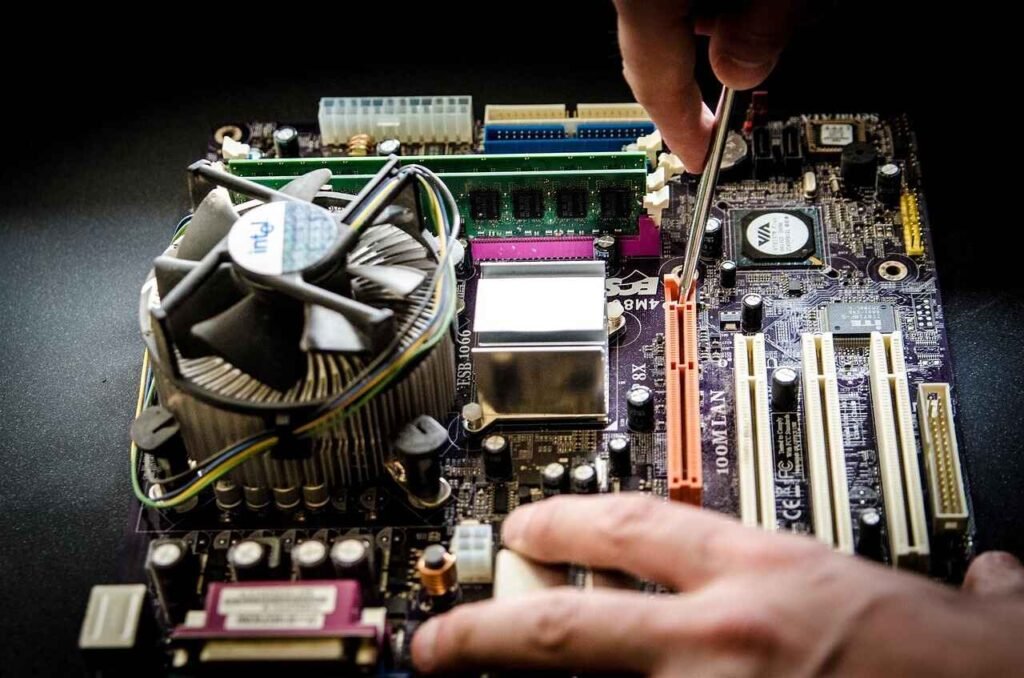Now the first talk about the Introduction to computer generations and we already know that computers are truly amazing devices.
We have also seen how computers become more and more accessible and easy to use.
In this topic, we are going to talk about the first 5 generations of computers and give full details about them.
According to based on the period of development and the features incorporated, the computers are classified into different Generations-
- First Generation computer (1945-1955) – Vacuum Tubes
- Second Generation computer (1957-1963) – Transistors
- Third Generation computer (1964-1972) – Microprocessors
- Fourth Generation computer ( 1972-2010) – Microprocessors
- Fifth Generation computer (2010- Artificial Intelligence
Introduction To Computer Generations- First generations of computers
- First Generation Computer
- ENIAC
- EDVAC
- UNIVAC
- IBM-701
- IBM-650
Advantages
- They do calculation very fast (In milliseconds)
- Vacuum tubes technology makes it possible to make electronic digital computers.
Disadvantages
- The weight is about 30 tonnes and the size was very big.
- Consume a lot of electrical energy
- very costly commercial production
- work efficiency was very low
- Not reliable and regular maintenance is required
2. Second Generation Computers
The invention of transistors greatly changed computer development. The transistors replaced the large vacuum tubes in televisions, radios, and computers.
As a result, the size of all electronic machinery has been shrinking ever since-
- IBM 1620,
- IBM 7094,
- CDC 1604,
- CDC 3600,
- UNIVAC 1108
- Many more…
Advantages
- By replacing the vacuum tubes in front of transistors make them lightweight in front of first-generation and size was reduced.
- Low cost of production and maintenance in than first-generation
- produce low heat
- the calculation becomes more fast and reliable
Disadvantages
- Only used for the main purpose
- they required a cooling system
- constant maintenance is required
3. Third generation computer
In this introduction to computer generations, now we are going to talk about third-generation computers.
Transistors were clearly an improvement over the vacuum tubes but they also produced much heat that can cause internal parts damaged and this is not good for any device.
But in 1958, Jack Kilby an engineer developed the Integrated circuit( IC ).
- PDP-8
- PDP-11
- IBM 360
- IBM 370
- ICL 2900
Advantages
- They become fast and reliable in front of the second generation.
- The cost of making also reduced
- I.C integrated circuit is the main advantage of this generation because it improves the performance and small in size.
- storage capacity was increased.
Disadvantages
- I.C also required air conditioning
- The highly sophisticated technology required for the manufacturing of I.C chips
- I.C chips are very difficult to maintain in front of the first 2 generations.
4. Fourth Generation computers
After I.C the sizes of computers reduce over time. And By the 1980s, Very-large-scale integration (VLSI) merged thousands of components onto a chip.
Ultra large-scale integration (ULSI) is developed more and increased that numbers into millions.
It also increased their powers and reliability. Microprocessors are the most important and main thing that can do these things to make computers faster and reliable.
- IBM 4341
- DEC 10
- STAR 1000
- PUP 11
Advantages
- The main advantage that Heat generation is reduced
- again size was reduced
- less maintenance is required
- All high-level language can be used
Disadvantages
- The design and fabrication of Microprocessors are very hard and very complex
- An air conditioner is required in some cases because I C are used in some places
5. Fifth Generation Computers
From 2010 to today is called the period of the Fifth Generation, before that time everyone is believing that computers are made by hardware but in the fifth-generation, everyone realized that software is also important to make computers.
some most popular advanced technologies of fifth-generation are Artificial intelligence, nanotechnology, parallel processing, etc.
- Desktop computer
- laptops
- Chromebook
Advantages
- Very fast and reliable
- multimedia feature introduced
- convenient size and simple user interface
Disadvantages
- They Steal Human jobs
- They need very low-level languages.
This is the fully explained and detailed blog on Introduction To Computer Generations, in front of you so please share this with your friends and if you have any suggestions then don’t forget to give us a suggestion. You can also check other articles like the Importance of computers.
